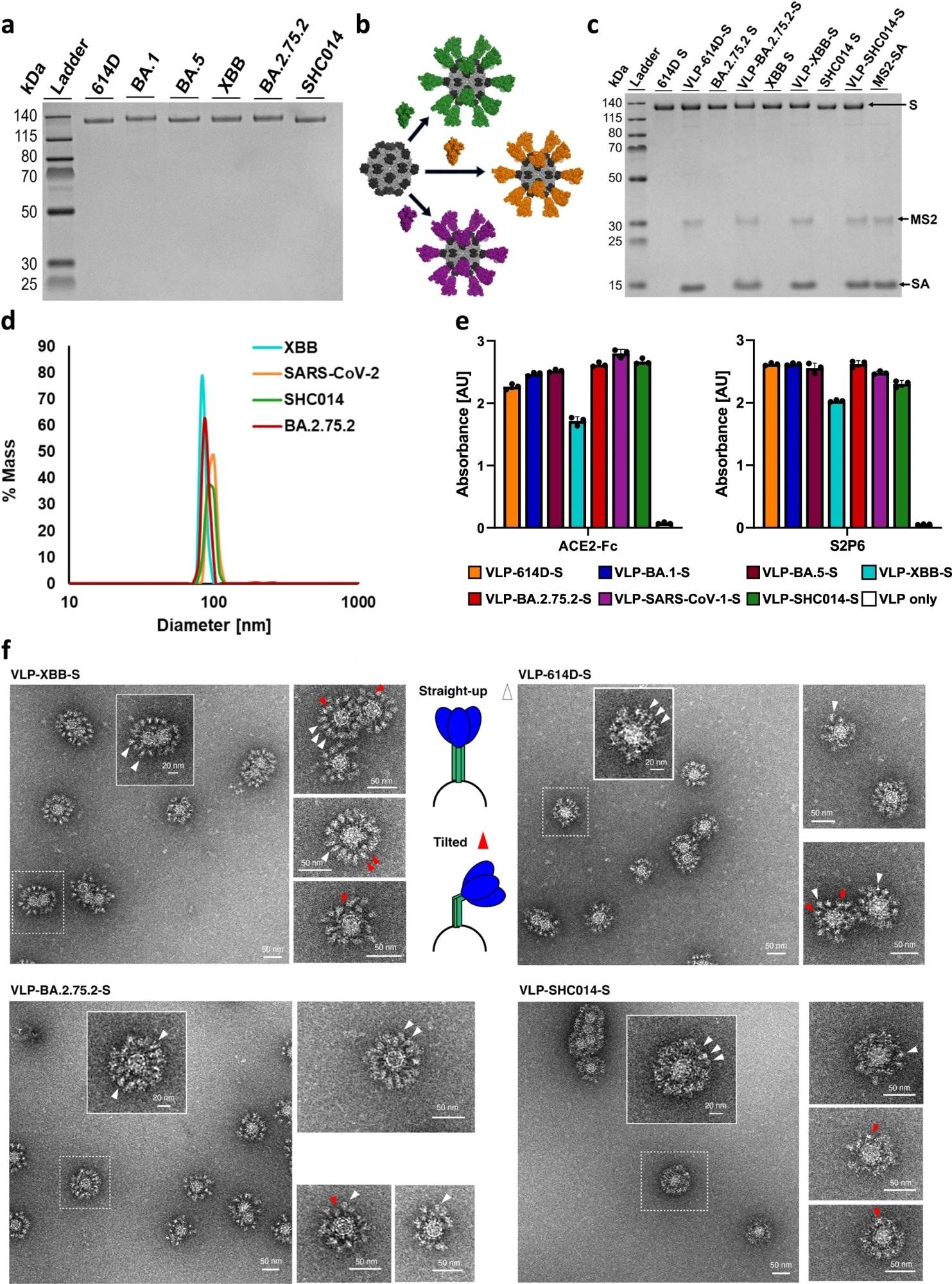Background
The most recent beta-coronavirus to develop is called severe acute respiratory syndrome coronavirus 2 (SARS-CoV-2) and it is the cause of the terrible coronavirus illness 2019 (COVID-19) pandemic.
SARS-CoV-2 has a spike glycoprotein on its surface that interacts with the host cell membrane receptor angiotensin-converting enzyme 2 (ACE2) to promote viral entry. This makes spike protein an important target for vaccine research.
Several vaccinations have been developed throughout the pandemic to help limit the spread of SARS-CoV-2 and its highly modified forms. Pfizer-BioNTech’s bivalent vaccination is one of the latest variant-specific formulations, with high protection against a variety of SARS-CoV-2 variations.
Aside from the establishment of a diverse spectrum of SARS-CoV-2 variations, bats have a large reservoir of ACE2-binding sarbecoviruses, emphasizing the necessity for pan-sarbecovirus and pan-betacoronavirus vaccines.
In this study, scientists created bivalent and trivalent vaccine formulations utilizing a spike protein nanoparticle platform and tested them in hamsters.
Vaccine design
The researchers had previously produced a nanoparticle-based vaccination containing several copies of the SARS-CoV-2 spike protein, which demonstrated great efficacy against SARS-CoV-2 in hamsters. In the current study, scientists exploited this spike protein nanoparticle technology to create a cocktail vaccination against human ACE2-binding clade 1 sarbecoviruses with pandemic implications.
They created a set of nanoparticle platforms, each exhibiting a single spike protein from a different sarbecovirus (ancestral SARS-CoV-2 spike protein; four omicron variants BA.1, BA.5, BA.2.75.2, XBB; SARS-CoV-1; and bat CoV SHC014). They investigated the immunogenicity of various formulations in hamsters.
They analyzed the antigenic landscape and chose one bivalent (two prominent spike proteins) formulation and two trivalent (three prominent spike proteins) formulations to study their neutralizing antibody responses and protective efficacy in hamsters infected with SARS-CoV-2 omicron variants (XBB.1 and BA.5) and bat coronaviruses (SHC014 and WIV1).
Validation of vaccine formulation
The researchers inoculated hamsters with bivalent or trivalent vaccine formulations adjuvanted with Alhydrogel. They also inoculated a separate group of hamsters with the Pfizer-BioNTech bivalent vaccine as a positive control.
The examination of humoral immune responses demonstrated that all three formulations were successful in inducing neutralizing antibody titers against the ancestral SARS-CoV-2 and the omicron variant BA.5.
Two trivalent vaccines comprising an extra omicron strain produced high neutralizing titers against the most recent omicron variation XBB.1. However, the bivalent vaccine had lower neutralizing activity against the XBB.1 variant.
In terms of neutralizing bat coronaviruses, all three formulations performed similarly against SHC014 and WIV1. In contrast, the Pfizer-BioNTech bivalent vaccine did not produce detectable neutralizing antibody titers against any of the tested coronaviruses.
Human immunization normally involves two doses of the Pfizer vaccine, which contains 30 micrograms of spike protein. However, in hamsters, only a single immunization with 10 micrograms of spike protein was given. This could explain the lack of neutralizing titers in hamsters inoculated with the Pfizer vaccine.
The authors then examined the protective efficacy of three vaccine formulations in hamsters infected with the omicron strains BA.5 and XBB.1 six weeks after inoculation. They assessed viral titers in the lungs three days following the viral challenge.
The results showed that all three formulations can provide complete protection against both BA.5 and XXB.1 subtypes. No detectable virus titers were found in the lungs of vaccinated hamsters.
Despite much lower neutralizing titers against XBB.1, the bivalent formulation completely protected the hamsters from XBB.1. However, a single inoculation with the Pfizer vaccine did not provide full protection against BA.5 and XBB.1.
The researchers investigated the protective efficacy of their trivalent formulation against bat coronaviruses. They discovered that the inoculated hamsters had no detectable virus titers in their lungs, indicating full immunity.

a SDS-PAGE characterization of biotinylated S proteins. The unprocessed gel is shown in Supplementary Fig. 3. This gel was run twice from the same preparation for each sample with similar results. b Schematic of the attachment of various biotinylated S proteins to MS2-SA. (MS2: light gray, PDB 2MS2; SA: dark gray, PDB 3RY2; S: green/orange/purple, PDB 6VSB) (c) SDS-PAGE gel of S and VLP-S for 614D, BA.2.75.2, XBB, and SHC014. Each VLP-S has been boiled to disrupt the streptavidin-biotin conjugation. The unprocessed gel is shown in Supplementary Fig. 3. This gel was run twice from the same preparation for each sample with similar results. d Characterization of VLP-614D-S (orange), VLP-SHC014-S (green), VLP-BA.2.75.2-S (red), and VLP-XBB-S (cyan) by dynamic light scattering. e Characterization of the binding of ACE2-Fc and S2P6 antibody to all VLP-S. (mean ± SD, n = 3: one independent assay with three technical replicates). Bar color identifies each VLP-S sample (VLP-614D-S: orange; VLP-BA.1-S: dark blue; VLP-BA.5-S: brown; VLP-XBB-S: cyan; VLP-BA.2.75.2: red; VLP-SARS-CoV-1-S: purple; VLP-SHC014-S: green; VLP only: white). f Characterization of VLP-XBB-S, VLP-614D-S, VLP-BA.2.75.2-S, and VLP-SHC014-S by negative stain transmission electron microscopy. Arrowheads ▲ indicate S proteins on the VLP surface, with white arrowheads indicating straight-up spike proteins and red arrowheads indicating tilted spike proteins. At least 70 images were collected and analyzed from one VLP-S preparation for each sample with similar results.
Study significance
The study’s trivalent spike protein nanoparticle formulation is highly effective at inducing a broadly neutralizing antibody response against SARS-CoV-1 and SARS-CoV-2-related sarbecoviruses.
According to Ravi Kane, one of the paper’s accompanying authors, “This vaccine may protect not just against the current strain circulating that year but also against future variants.”

